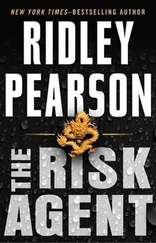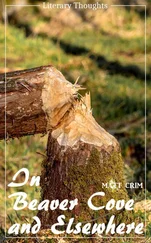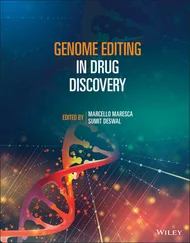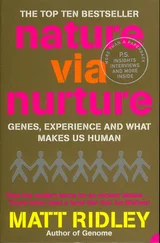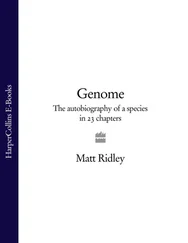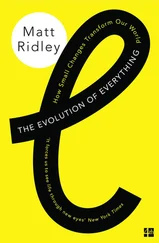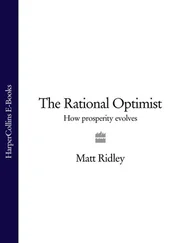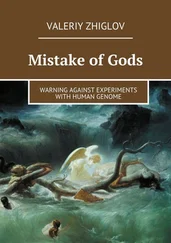Genome - Matt Ridley
Здесь есть возможность читать онлайн «Genome - Matt Ridley» — ознакомительный отрывок электронной книги совершенно бесплатно, а после прочтения отрывка купить полную версию. В некоторых случаях можно слушать аудио, скачать через торрент в формате fb2 и присутствует краткое содержание. Жанр: Старинная литература, на английском языке. Описание произведения, (предисловие) а так же отзывы посетителей доступны на портале библиотеки ЛибКат.
- Название:Matt Ridley
- Автор:
- Жанр:
- Год:неизвестен
- ISBN:нет данных
- Рейтинг книги:5 / 5. Голосов: 1
-
Избранное:Добавить в избранное
- Отзывы:
-
Ваша оценка:
- 100
- 1
- 2
- 3
- 4
- 5
Matt Ridley: краткое содержание, описание и аннотация
Предлагаем к чтению аннотацию, описание, краткое содержание или предисловие (зависит от того, что написал сам автор книги «Matt Ridley»). Если вы не нашли необходимую информацию о книге — напишите в комментариях, мы постараемся отыскать её.
Matt Ridley — читать онлайн ознакомительный отрывок
Ниже представлен текст книги, разбитый по страницам. Система сохранения места последней прочитанной страницы, позволяет с удобством читать онлайн бесплатно книгу «Matt Ridley», без необходимости каждый раз заново искать на чём Вы остановились. Поставьте закладку, и сможете в любой момент перейти на страницу, на которой закончили чтение.
Интервал:
Закладка:
1 4 G E N O M E
In Auschwitz in 1943, Josef Mengele is torturing twins to death in a grotesque parody of scientific inquiry. Mengele is trying to understand heredity, but his eugenics proves not to be the path to enlightenment. Mengele's results will be useless to future scientists.
In Dublin in 1943, a refugee from Mengele and his ilk, the great physicist Erwin Schrodinger is embarking on a series of lectures at Trinity College entitled What is life?' He is trying to define a problem. He knows that chromosomes contain the secret of life, but he cannot understand how: 'It is these chromosomes . . . that contain in some kind of code-script the entire pattern of the individual's future development and of its functioning in the mature state.' The gene, he says, is too small to be anything other than a large molecule, an insight that will inspire a generation of scientists, including Crick, Watson, Wilkins and Franklin, to tackle what suddenly seems like a tractable problem. Having thus come tantalisingly close to the answer, though, Schrodinger veers off track. He thinks that the secret of this molecule's ability to carry heredity lies in his beloved quantum theory, and is pursuing that obsession down what will prove to be a blind alley. The secret of life has nothing to do with quantum states. The answer will not come from physics.3
In New York in 1943, a sixty-six-year-old Canadian scientist, Oswald Avery, is putting the finishing touches to an experiment that will decisively identify D N A as the chemical manifestation of heredity. He has proved in a series of ingenious experiments that a pneumonia bacterium can be transformed from a harmless to a virulent strain merely by absorbing a simple chemical solution. By 1943, Avery has concluded that the transforming substance, once purified, is D N A . But he will couch his conclusions in such cautious language for publication that few will take notice until much later.
In a letter to his brother Roy written in May 1943, Avery is only slightly less cautious:4
If we are right, and of course that's not yet proven, then it means that nucleic acids [DNA] are not merely structurally important but functionally active substances in determining the biochemical activities and specific L I F E 1 5
characteristics of cells — and that by means of a known chemical substance it is possible to induce predictable and hereditary changes in cells. That is something that has long been the dream of geneticists.
Avery is almost there, but he is still thinking along chemical lines.
'All life is chemistry', said Jan Baptista van Helmont in 1648, guessing.
At least some life is chemistry, said Friedrich Wohler in 1828 after synthesising urea from ammonium chloride and silver cyanide, thus breaking the hitherto sacrosanct divide between the chemical and biological worlds: urea was something that only living things had produced before. That life is chemistry is true but boring, like saying that football is physics. Life, to a rough approximation, consists of the chemistry of three atoms, hydrogen, carbon and oxygen, which between them make up ninety-eight per cent of all atoms in living beings. But it is the emergent properties of life — such as heritability
- not the constituent parts that are interesting. Avery cannot conceive what it is about D N A that enables it to hold the secret of heritable properties. The answer will not come from chemistry.
In Bletchley, in Britain, in 1943, in total secrecy, a brilliant mathematician, Alan Turing, is seeing his most incisive insight turned into physical reality. Turing has argued that numbers can compute numbers. To crack the Lorentz encoding machines of the German forces, a computer called Colossus has been built based on Turing's principles: it is a universal machine with a modifiable stored program.
Nobody realises it at the time, least of all Turing, but he is probably closer to the mystery of life than anybody else. Heredity is a modifiable stored program; metabolism is a universal machine. The recipe that links them is a code, an abstract message that can be embodied in a chemical, physical or even immaterial form. Its secret is that it can cause itself to be replicated. Anything that can use the resources of the world to get copies of itself made is alive; the most likely form for such a thing to take is a digital message - a number, a script or a word.5
In New Jersey in 1943, a quiet, reclusive scholar named Claude Shannon is ruminating about an idea he had first had at Princeton l 6 G E N O M E
a few years earlier. Shannon's idea is that information and entropy are opposite faces of the same coin and that both have an intimate link with energy. The less entropy a system has, the more information it contains. The reason a steam engine can harness the energy from burning coal and turn it into rotary motion is because the engine has high information content — information injected into it by its designer. So does a human body. Aristotie's information theory meets Newton's physics in Shannon's brain. Like Turing, Shannon has no thoughts about biology. But his insight is of more relevance to the question of what is life than a mountain of chemistry and physics. Life, too, is digital information written in D N A . 6
In the beginning was the word. The word was not D N A . That came afterwards, when life was already established, and when it had divided the labour between two separate activities: chemical work and information storage, metabolism and replication. But D N A contains a record of the word, faithfully transmitted through all subsequent aeons to the astonishing present.
Imagine the nucleus of a human egg beneath the microscope.
Arrange the twenty-three chromosomes, if you can, in order of size, the biggest on the left and the smallest on the right. Now zoom in on the largest chromosome, the one called, for purely arbitrary reasons, chromosome 1. Every chromosome has a long arm and a short arm separated by a pinch point known as a centromere. On the long arm of chromosome 1, close to the centromere, you will find, if you read it carefully, that there is a sequence of 120 letters
- As, Cs, Gs and Ts - that repeats over and over again. Between each repeat there lies a stretch of more random text, but the 120-letter paragraph keeps coming back like a familiar theme tune, in all more than 100 times. This short paragraph is perhaps as close as we can get to an echo of the original word.
This 'paragraph' is a small gene, probably the single most active gene in the human body. Its 120 letters are constantly being copied into a short filament of R N A . The copy is known as 5S R N A . It sets up residence with a lump of proteins and other R N A s , carefully intertwined, in a ribosome, a machine whose job is to translate L I F E 1 7
D N A recipes into proteins. And it is proteins that enable D N A to replicate. To paraphrase Samuel Butler, a protein is just a gene's way of making another gene; and a gene is just a protein's way of making another protein. Cooks need recipes, but recipes also need cooks. Life consists of the interplay of two kinds of chemicals: proteins and D N A .
Protein represents chemistry, living, breathing, metabolism and behaviour - what biologists call the phenotype. D N A represents information, replication, breeding, sex - what biologists call the genotype. Neither can exist without the other. It is the classic case of chicken and egg: which came first, D N A or protein? It cannot have been D N A , because D N A is a helpless, passive piece of mathematics, which catalyses no chemical reactions. It cannot have been protein, because protein is pure chemistry with no known way of copying itself accurately. It seems impossible either that D N A invented protein or vice versa. This might have remained a baffling and strange conundrum had not the word left a trace of itself faintly drawn on the filament of life. Just as we now know that eggs came long before chickens (the reptilian ancestors of all birds laid eggs), so there is growing evidence that R N A came before proteins.
Читать дальшеИнтервал:
Закладка:
Похожие книги на «Matt Ridley»
Представляем Вашему вниманию похожие книги на «Matt Ridley» списком для выбора. Мы отобрали схожую по названию и смыслу литературу в надежде предоставить читателям больше вариантов отыскать новые, интересные, ещё непрочитанные произведения.
Обсуждение, отзывы о книге «Matt Ridley» и просто собственные мнения читателей. Оставьте ваши комментарии, напишите, что Вы думаете о произведении, его смысле или главных героях. Укажите что конкретно понравилось, а что нет, и почему Вы так считаете.



